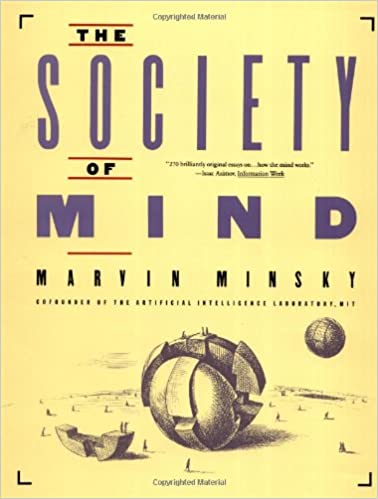
by Admin | Apr 30, 2021 | Chronicles, News
This week in The History of AI at AIWS.net – Marvin Minsky publishes The Society of Mind in 1987. This book is a theoretical description of the mind as a collection of cooperating agents.
Marvin Minsky was an American cognitive and computer scientist. He penned the research proposal for the Dartmouth Conference, which coined the term “Artificial Intelligence”, and he was a participant in it when it was hosted in 1956. Minsky would also make significant contributions to artificial intelligence, both in the study of the field and in popular culture. He won the Turing Award in 1969.
The Society of Mind is a book on the theory of “Society of Mind”, which came out of Marvin Minsky’s own thinking. In the book, Minsky describes the mind as a collection of mindless but cooperating “agents”. He first started developing the theory with Seymour Papert in the 1970s, but worked on it and published the book at a later point. The book is viewable at the Internet Archive.
Although the book does not directly reference or influence the development of artificial intelligence, it displays the theoretical dimensions of Marvin Minsky, the AI pioneer. The book also gives a glimpse into Minsky’s thinking in building artificial intelligence. Thus, the HAI initiative considers this an event in the history of AI.
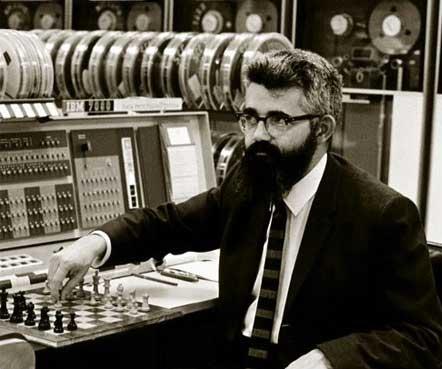
by Admin | Apr 23, 2021 | Chronicles, News
This week in The History of AI at AIWS.net – John McCarthy proposed the “advice taker” in his paper “Programs with Common Sense.” This hypothetical program was the first to use logic to represent information. The paper was published in 1959.
John McCarthy was an American computer scientist. He, along with Minsky and others, co-wrote the proposal for the Dartmouth Conference, and participated in it. McCarthy also developed the Lisp programming language. He spent most of his career at Stanford after working at Dartmouth and MIT. McCarthy won the Turing Award in 1971.
McCarthy wrote and published the paper while he was a part of the Computer Science at Stanford University. It can be viewed and downloaded here.
The HAI initiative considers this an event in the history of AI due to the paper being one of the earliest developments in artificial intelligence. Furthermore, John McCarthy is one of the pivotal figures in the growth of the field, having been there at the Dartmouth Conference.
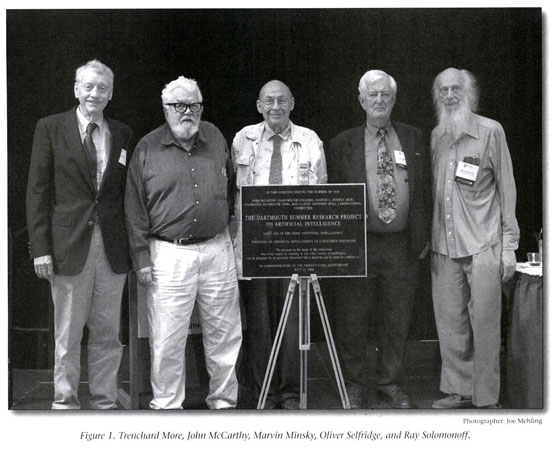
by Admin | Apr 16, 2021 | Chronicles, News
This week in The History of AI at AIWS.net – MIT receives a $2.2 million grant in June 1963 from DARPA, which was used to fund project MAC. This project included the AI Group of Marvin Minsky and John McCarthy.
DARPA is the Defense Advanced Research Projects Agency, a research and development agency of the American Department of Defense. It was founded on orders of President Eisenhower on February 7, 1958. The agency is responsible for helping the military develop emerging technologies. DARPA became a major sponsor of AI development, an example being the Strategic Computing Initiative.
Marvin Minsky was an American cognitive and computer scientist. He penned the research proposal for the Dartmouth Conference, which coined the term “Artificial Intelligence”, and he was a participant in it when it was hosted in 1956. Minsky would also make significant contributions to artificial intelligence, both in the study of the field and in popular culture.
He won the Turing Award in 1969. John McCarthy was an American computer scientist. He, along with Minsky and others, co-wrote the proposal for the Dartmouth Conference, and participated in it. McCarthy also developed the Lisp programming language. He spent most of his career at Stanford after working at Dartmouth and MIT. McCarthy won the Turing Award in 1971.
The HAI initiative considers this development an event in the history of AI, due to this funding allowing pioneers of the field to further their work and research. Most notably, MIT, Minsky, and McCarthy have contributed much to the advancement of artificial intelligence and other adjacent fields in computer science.
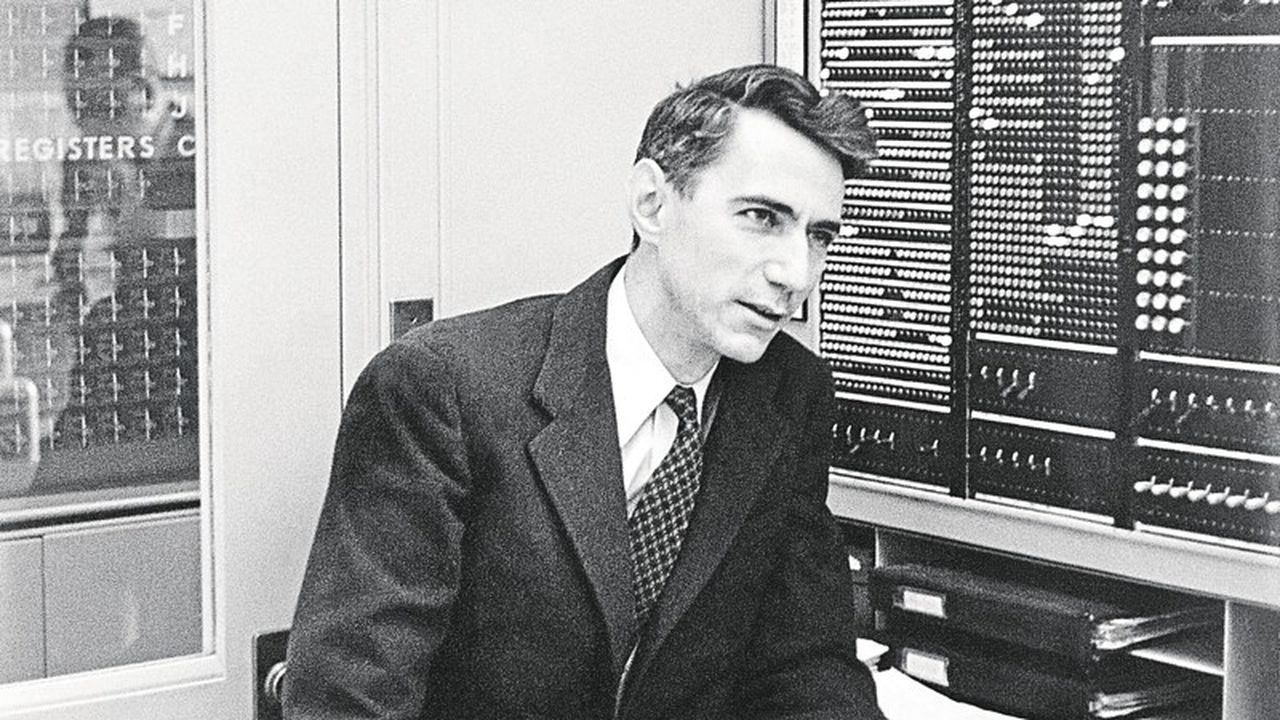
by Admin | Apr 9, 2021 | Chronicles, News
This week in The History of AI at AIWS.net – Claude Shannon was born on 30 April, 1916. He is recognized as the father of Information Technology. Shannon also participated and was a part of the inception of the Dartmouth Conference.
Claude Shannon was an American mathematician and electrical engineer. Shannon was born on 30 April, 1916 in Petoskey, Michigan, although he would spend most of his childhood at the nearby city Gaylord. He studied at the University of Michigan for his undergraduate degree and went to MIT for his Master’s and Ph.D. During the Second World War, Shannon joined Bell Labs and helped contributed in cryptography. It was during this time that he came into contact with Alan Turing. In 1948, he published the paper “A Mathematical Theory of Communication,” which is credited with founding the field of IT. He would work as faculty at MIT starting in 1956 until 1978. Although most of his contributions are in IT and other various electrical-related fields, he did propose a workshop on AI and join it (the Dartmouth Conference) in 1956. Shannon passed away on 24 February, 2001.
The Dartmouth Conference was a workshop held at Dartmouth College in 1956 to brainstorm ideas on “thinking machines”. There was a proposal drawn up the year before for such a workshop by Marvin Minsky, Nathaniel Rochester, and Claude Shannon. Amongst those that attended the workshop were the writers of the proposal, Allan Newell, Herbert Simon, and John McCarthy. This event is widely noted as the founding event of AI.
Claude Shannon was a pivotal figure in the development of IT and AI, in addition to his participation in the Dartmouth Conference, which is considered one of the founding events of the study of Artificial Intelligence. Thus, the HAI initiative recognizes his birth as an event in the history of AI.
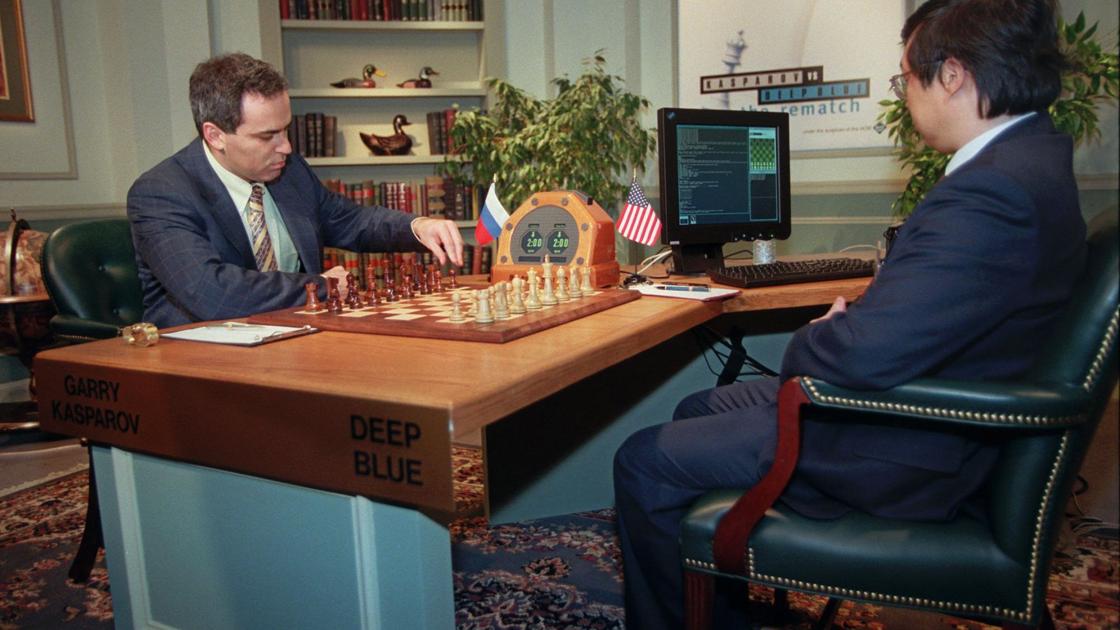
by Admin | Apr 2, 2021 | Chronicles, News
This week in The History of AI at AIWS.net – IBM “Deep Blue” machine defeats Garry Kasparov, the then-reigning World Chess Champion, at chess, in a highly-publicised match on 11 May, 1997. This date was the conclusion of 2 matches, one starting the year before, 1996.
The face-off began on February 10, 1996, in Philadelphia, Pennsylvania. Kasparov actually won this match 4-2. A year later in New York City, they would actually rematch, where Deep Blue defeated Kasparov 3.5-2.5. This rematch hosted a newer version of Deep Blue, dubbed “Deeper Blue”, that was upgraded after the first match. Deep Blue would also play against two other chess grandmasters. This battle was the subject of documentaries and talked about long after the match ended. It was speculated that the match was rigged in favour of IBM to boost their stocks.
IBM “Deep Blue” had its origins in a project by students at Carnegie Mellon University under the name ChipTest. It was later rebranded to Deep Thought. After these students graduated from Carnegie Mellon, they were asked by IBM to continue their research at the company. In 1989, it was renamed to Deep Blue after a competition. The machine was also helped in development by chess grandmaster Joel Benjamin. Deep Blue was released in 1996. After its rematch with Kasparov in 1997, it was dismantled. Its racks are held at the National Museum of American History and the Computer History Museum.
The HAI initiative considers this an event in the History of AI due to its impact on public perceptions of Artificial Intelligence. Similar to IBM’s public stunt with Jeopardy, this was also a display of the progress that AI has come from its heydays and origins in the 1960s.

by Admin | Mar 26, 2021 | Chronicles, News
This week in The History of AI at AIWS.net – Frank Rosenblatt developed the Perceptron in 1957. It is a form of neural network that allowed pattern-recognition.
Frank Rosenblatt was an American psychologist. Born in 1928, Rosenblatt would go on to study at Cornell University for both his undergraduate studies and doctorate. He worked at Calspan, then the Cornell Aeronautical Laboratory, where he was a psychologist and became the head of one of the departments there. This lab is also where he would develop perceptrons. In 1959, he went to work at the Cornell campus on Ithaca, becoming a professor and director of programs. Rosenblatt passed away in 1970.
The Perceptron is a device that was built with biological principles ability to learn in mind. It was originally simulated on an IBM machine in 1957. Rosenblatt received media recognition and coverage for the Perceptron, with magazines such as the New Yorker proclaiming that it was “a remarkable machine… capable of what amounts to thought.” However, Marvin Minsky and Seymour Papert put a damper on the enthusiasm for Perceptrons when they published a book describing its limitations.
This development is considered an event in the history of AI since Perceptrons were seen as one of the precursors to artificial intelligence. It also displays the early thought and reception to the growing AI field. Thus, the HAI initiative considers this event one of the events in the History of AI.
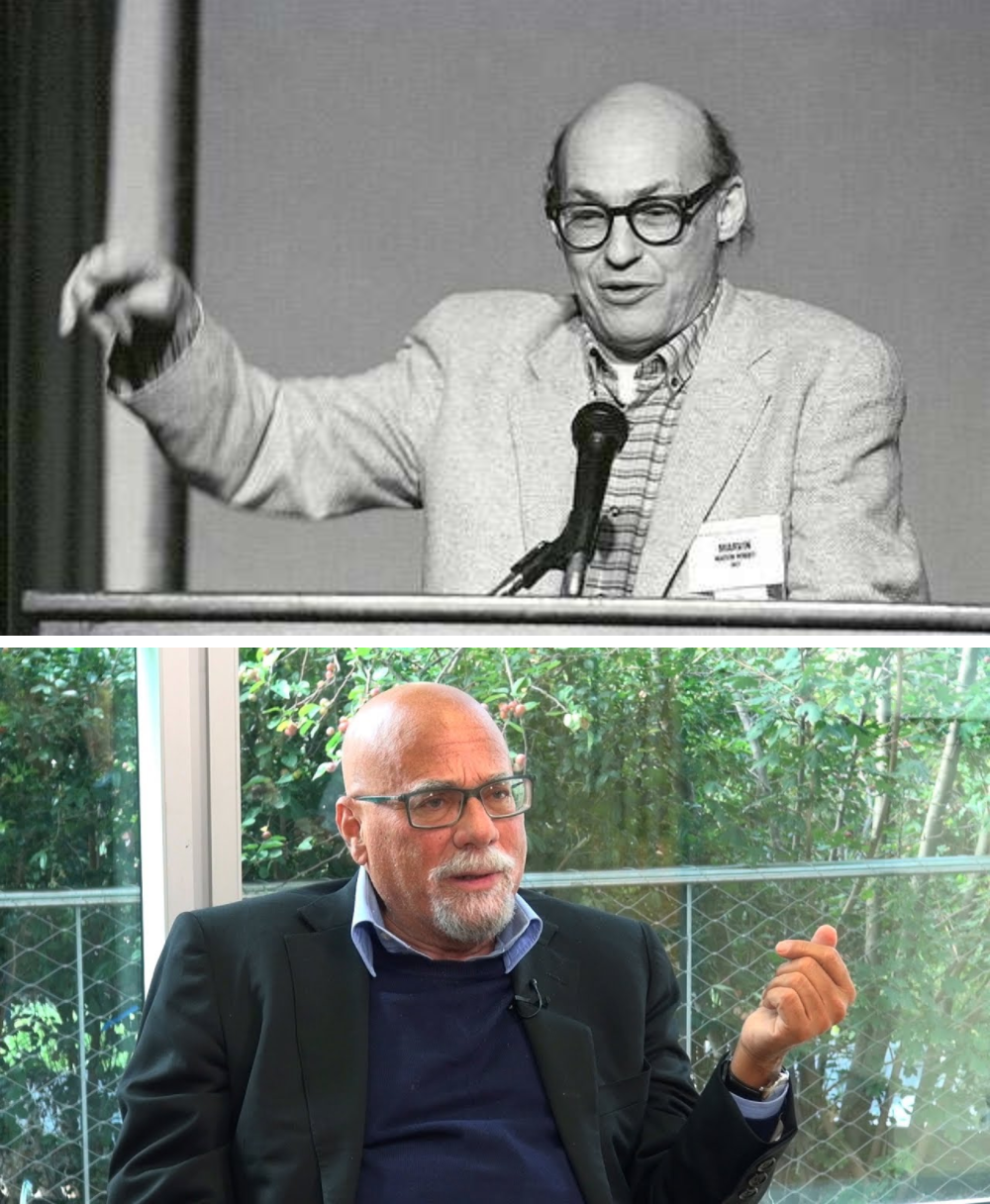
by Admin | Mar 19, 2021 | Chronicles, News
This week in The History of AI at AIWS.net – Marvin Minsky and Roger Schank warned of a second AI winter at a meeting of the American Assocation of Artificial Intelligence in 1984. Their prediction would come true 3 years later.
Marvin Minksy was an important pioneer in the field of AI. He penned the research proposal for the Dartmouth Conference, which coined the term “Artificial Intelligence”, and he was a participant in it when it was hosted the next summer. Minsky would also co-founded the MIT AI labs, which went through different names, and the MIT Media Laboratory. In terms of popular culture, he was an adviser to Stanley Kubrick’s acclaimed movie 2001: A Space Odyssey. He won the Turing Award for his influence on AI in 1969.
Roger Schank is an American psychologist and Artificial Intelligence scientist. He studied mathematics as an undergrad at Carnegie Mellon, before receiving a PhD at University of Texas (Austin) in linguistics. He went on to work at Stanford and Yale, before becoming a professor of computer science and psychology at Yale. He also received a $30 million grant to set up the Institute for the Learning Sciences at University of Chicago in 1989. Schank is known for pioneering conceptual dependency theory, a model used in AI systems, and case-based reasoning.
This warning is an event for the HAI as it showcases the build-up to a second AI winter, and the aftermath of the first one. It is also significant in that it features some of the pioneers in artificial intelligence.
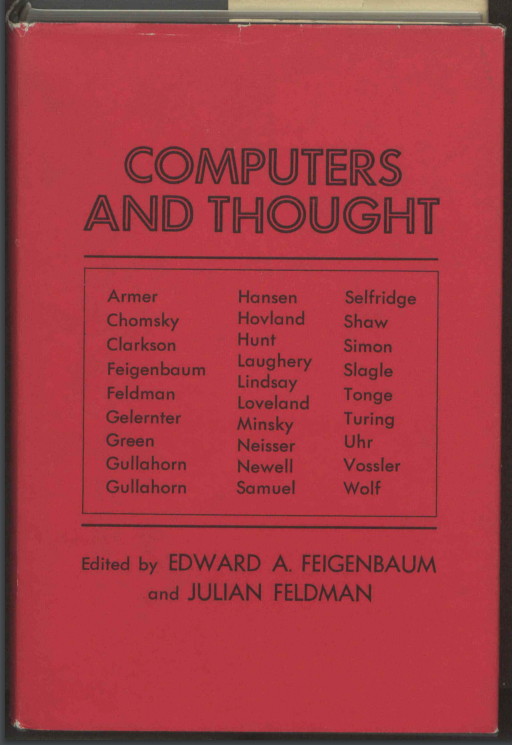
by Admin | Mar 12, 2021 | Chronicles, News
This week in The History of AI at AIWS.net – in 1963 Edward Feigenbaum and Julian Feldman published Computers and Thought, a book composed of articles on Artificial Intelligence, the first of its kind. Feigenbaum and Feldman edited and wrote some of the articles but they were not the the only contributors. Computers and Thought includes 20 articles from notable AI pioneers such as Alan Turing, Marvin Minsky, Allan Newell, Herbert Simon, and others.
Edward Feigenbaum is an American computer scientist focused on Artificial Intelligence. He studied at Carnegie Mellon University for both his B.S. and Ph.D., with Herbert Simon, an AI pioneer, as his doctoral advisor. He would go on to work at UC Berkeley and Stanford, the latter where he became Professor Emeritus of Computer Science (since 2000). Feigenbaum received the ACM Turing Award in 1994 with Raj Reddy for pioneering in AI and demonstrating its commercial potential.
Julian Feldman is an American computer scientist with an eye on Artificial Intelligence. Feldman studied at the University of Chicago for his undergrad; received an M.A. in political science; before going to Carnegie Mellon’s Graduate School of Industrial Administration for his Ph.D. He held a tenured position at UC Berkeley, before leaving it to help build UC Irvine, where he would create its Information and Computer Sciences department, the first ICS school in the UC system. Feldman also wrote papers and articles on connectionism, a fairly contentious topic within AI and computer science.
The HAI Initiative considers this book an important event in the history of AI due to its culmination of various thoughts on AI from its pioneers. Feigenbaum and Feldman themselves are also notable figures in the development of artificial intelligence.

by Admin | Mar 5, 2021 | Chronicles, News
This week in The History of AI at AIWS.net – in 1970 Marvin Minsky was quoted in Life magazine, “In from three to eight years we will have a machine with the general intelligence of an average human being.”
Marvin Minsky was interviewed by Life magazine in 1970 by journalist Brad Darrach, who was writing an article on Shakey the Dog, an early mobile robot built at Stanford. Minsky made this bold claim, and further added on that “If we’re lucky, they might decide to keep us as pets.” This statement was meant as a warning to not let intelligence computers control vital systems.
Marvin Minksy was an important pioneer in the field of AI. He penned the research proposal for the Dartmouth Conference, which coined the term “Artificial Intelligence”, and he was a participant in it when it was hosted the next summer. Minsky would also co-founded the MIT AI labs, which went through different names, and the MIT Media Laboratory. In terms of popular culture, he was an adviser to Stanley Kubrick’s acclaimed movie 2001: A Space Odyssey. He won the Turing Award for his influence on AI in 1969.
Marvin Minsky’s quote and this interview highlighted the popularity and mainstream attention AI have received in the ‘60s and ‘70s. Furthermore, Marvin Minsky was one, if not the, most important figure in the development of Artificial Intelligence. His writings and sayings during the rise of AI in the 60s are still deliberated about to this day.
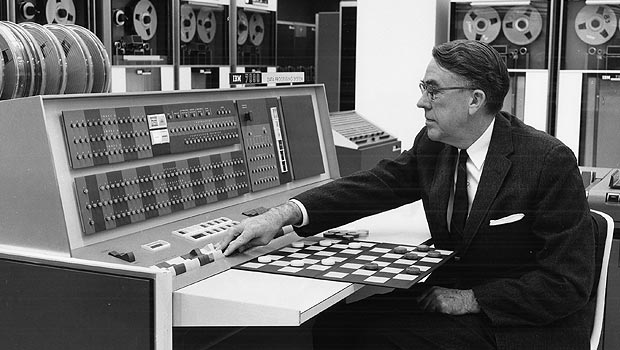
by Admin | Feb 26, 2021 | Chronicles, News
This week in The History of AI at AIWS.net – Arthur Samuel popularises the term “machine learning” in 1959 in his article “Some Studies in Machine Learning Using the Game of Checkers”.
Arthur L. Samuel was an American computer scientist. He was a pioneer in the field of computer gaming and artificial intelligence. Born in 1901, he studied at the College of Emporia for his Bachelor and MIT for his Master. His Samuel Checkers-playing Program was one of the first successful self-learning programs and was a basis for this article that coined “machine learning”. He was notable for his works at IBM and Stanford. Samuel won the Computer Pioneer Award in 1987 for his contributions to computer science and AI. He passed away in 1990.
“Machine learning” is the study of computers that can self-improve through time and experience. It is often considered a part in the development of artificial intelligence. Although the study has existed before 1959, with this program and also developments such as the Dartmouth Conference, helped the field become more active. A subset of machine learning, deep learning, has also been gaining traction lately.
The article that he wrote on this program and “machine learning” can be read and downloaded here.
This is important to the history of AI in that it popularises the term “machine learning”, which is an important aspect of artificial intelligence. Arthur Samuel is also one of the pioneers in computer science and AI.









